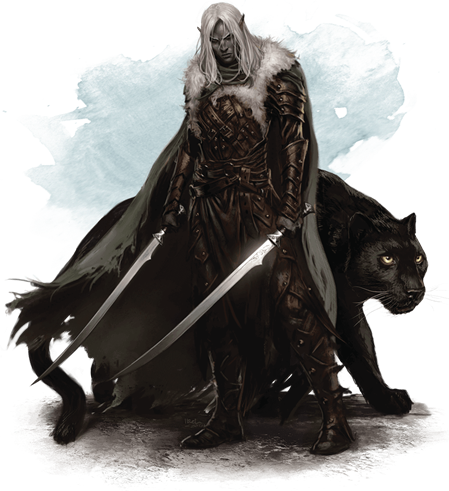 Class is back in session. This week, we are greeted by an animal companion who loyally stands at our side. A Beast Master is a ranger who is bonded to a beast from the lands they wander. Some fight alongside a loyal wolf, others with a flying snake, a giant poisonous snake, or even a pteranodon from the primeval jungles of Chult. A ranger who chooses to become a Beast Master walks a challenging path, but with careful consideration of your animal companion, you can become a powerful warrior.
Class is back in session. This week, we are greeted by an animal companion who loyally stands at our side. A Beast Master is a ranger who is bonded to a beast from the lands they wander. Some fight alongside a loyal wolf, others with a flying snake, a giant poisonous snake, or even a pteranodon from the primeval jungles of Chult. A ranger who chooses to become a Beast Master walks a challenging path, but with careful consideration of your animal companion, you can become a powerful warrior.
We’ve completed our first full rotation of the twelve classes, and exhausted all the content that the Basic Rules have to offer—as far as classes go, that is. This next wave of the Class 101 series will appraise every subclass within the Player’s Handbook and break down each subclass’s strengths, weaknesses, thematic elements, and everything else a player would want to know before playing that subclass. Because of this, you will need to own the Player’s Handbook (or purchase the subclass a la carte on the Marketplace) in order to make full use of this series.
Check out other articles in the Ranger 101 series, like our broad overview in Ranger 101: A Beginner’s Guide to Exploring the Wilderness, and Ranger 101: Hunter. If you’re interested in playing other classes, check out the entire Class 101 series.
Story of the Beast Master
“Vine, fangs!” barked the ranger. He was locked in combat with a trio of snarling hobgoblins—well-armed scouts from the forward camp of an invasion force that was slowly pushing into jungle. He was flanked, with one hobgoblin’s spear tip mere inches from his back, goading him straight into the sharp, hungry blades of the two others. For a brief moment, he looked over his shoulder as he barked a command, and then leapt forward, drawing his scimitars in a single motion, like a hawk unfurling its wings.
Suddenly, the hobgoblin at the ranger’s back gargled and fell limp, hitting the hard roots of the forest floor with a jangle of chain mail. The ranger, free to focus on the two foes before him, fought expertly. He put pressure on one warrior with the blade in his right hand, while deftly parrying blows from the other with the sword in his left. Sweat poured from the defending hobgoblin’s brow, and she looked to her squadmate in panic. The ranger noticed this subtle motion, and barked another command.
“Vine, bind!”
Before the attacking hobgoblin could react, a venomous python lunged at the hobgoblin warrior, coiling around his neck in an instant. He fell to the ground as the air was squeezed from his throat. The ranger glanced back just long enough to give a faint smile to his loyal companion, and then renewed his assault on the now-solitary hobgoblin. The advantage of numbers lost, the hobgoblin took a halting step backward, and then dropped her sword and shield and fled towards the forest’s edge. The ranger spit in her footprints, and turned back to the creature whose neck was constricted by his venomous companion.
“Vine, let him breathe.” The ranger lowered himself on one knee and grabbed the hobgoblin’s long, greasy hair, and pulled so that his neck was raised. He pressed the blunt curve of one of his scimitars against his captive’s neck as he returned to consciousness. “Now, let’s talk.”
Beast Master Features
The ranger gains four subclass features starting at 3rd, 7th, 11th, and 15th level. You can read all of the Beast Master features in the Player’s Handbook. In summary, your subclass features allow you to:
- Gain the aid of a beast companion, allowing you to command it to take action both in and out of battle, and grant it bonuses based on your proficiency bonus.
- Command your beast to take non-attack actions as a bonus action.
- Command your beast to attack more than once when it takes the Attack action.
- Allow the spells you cast on yourself to also affect your beast companion.
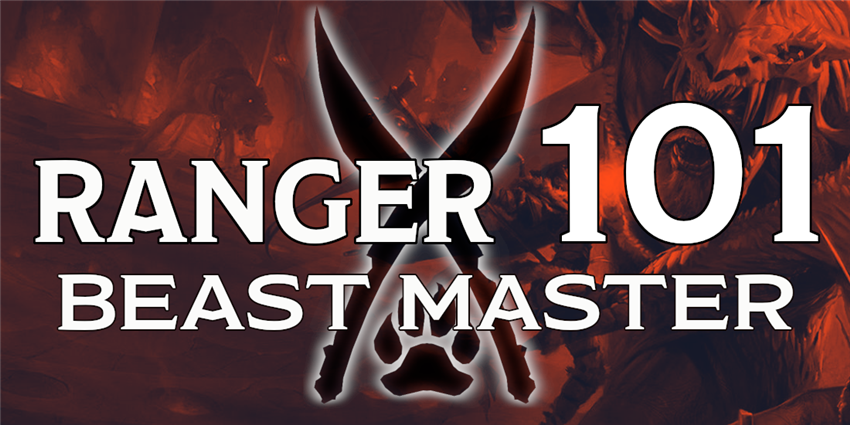
Benefits of the Beast Master Archetype
In the first article written for D&D Beyond, I spoke with then-D&D freelancer and now-D&D designer Dan Dillon about the Beast Master, its benefits, its shortcomings, and the many ways the Beast Master can be misunderstood. Discussing the benefits and drawbacks of the Beast Master archetype is complex, as its strengths and weaknesses are often intertwined. Nevertheless, they’re presented here in as clear and simple a manner as possible.
Playing a Beast Master ranger grants you the most powerful animal companion in the game, even when compared to the familiar of a Pact of the Chain warlock, or a Battle Smith artificer—though to do so, you’ll need to choose wisely. As discussed in more detail below, there are many great options for animal companions, but countless more beasts that will hinder you in combat as much as they help.
A Beast Master’s animal companion grows in offensive and defensive power as you level up. Though you must spend your action to command it to attack at first, you eventually gain the ability to trade one of your attacks (with Extra Attack) to command your beast to attack. Later still, your beast can attack multiple times when you command it to attack, allowing you to trade one of your attacks for several of your companion’s. A beast with a single powerful attack, such as a giant poisonous snake or a monster with an attack that requires a creature to be grappled, like a giant frog, is very well served by this additional attack.
Beyond this, some beasts have a mobility advantage that makes it easy for rangers to Help their allies from afar, making the Beast Master a versatile offensive and supportive character. If you have a flying snake companion, you can use your action to command it to fly up to 60 feet to an enemy, use the Help action, and then fly away, using the Flyby trait to escape without provoking opportunity attacks. Your party rogue, if you have one, can make serious use of this advantage to gain Sneak Attack against that foe.
Drawbacks of the Beast Master Archetype
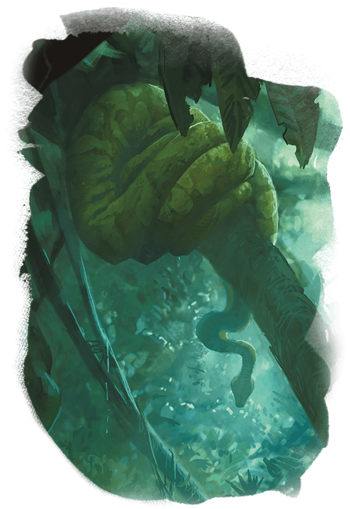 Though it’s true that many of the benefits of the Beast Master archetype are often forgotten, it can’t be denied that this subclass has problems. Some of these problems are legitimate mechanical deficiencies, such as the Beast Master’s lack of bonus spells (a drawback it shares with the Hunter archetype)—some are problems of balanced options that don’t feel fun, like having to find a new beast companion if your current one dies—and some are both, like having to sacrifice your own action at early levels to command your beast to attack.
Though it’s true that many of the benefits of the Beast Master archetype are often forgotten, it can’t be denied that this subclass has problems. Some of these problems are legitimate mechanical deficiencies, such as the Beast Master’s lack of bonus spells (a drawback it shares with the Hunter archetype)—some are problems of balanced options that don’t feel fun, like having to find a new beast companion if your current one dies—and some are both, like having to sacrifice your own action at early levels to command your beast to attack.
The most egregious challenge that new Beast Master players face is the endless sea of animal companions to choose from, ranging from CR 0 to CR 1/4. This not only requires the player to dig through an ostensibly DM-only resource, the Monster Manual (or the D&D Beyond monster database), but also to have the in-depth game knowledge required to choose a helpful beast. Some options, like the hawk may seem iconic, but ultimately provide little help, since they can’t contribute much in combat, and are unable to communicate with their ranger, making them poor scouts. Many of the most powerful options, like the giant poisonous snake and giant frog are odd and distinctly un-iconic choices, making new players unlikely to choose them right out of the gate.
The issue of the Beast Master’s drawbacks have been discussed to death on countless social media posts and optimization forums, and don’t need to be discussed any further here. Likewise, innumerable fixes to the subclass exist, such as allowing your animal companion to continue performing an action (like Help or Attack) on subsequent turns until you command it to perform a different action, or allowing you to command your animal companion to attack as a bonus action instead of as an action or sacrificing an attack.
Side Note: Unearthed Arcana
A few weeks ago, the most recent Unearthed Arcana presented several options that mitigate some of the Beast Master’s most egregious flaws. Namely, the new Ranger Companion Options eliminates the risk of falling into one of the many of the “trap options” of low-CR animal companions, and allows you to resurrect your animal companion if it dies during your adventures. Though these are playtest options, they’re worth looking at. If you like what you see, consider asking your Dungeon Master if you can use them in your game.
Suggested Build
If you’re building a Beast Master ranger from 1st level, be aware that you won’t gain your subclass until 3rd level. When creating your character, you should choose a race that gives you a bonus to Dexterity, Constitution, or Wisdom—ideally at least two of the three. You can play a ranger that focuses on Strength instead of Dexterity, and uses large melee weapons instead of dual-wielding light weapons or shooting a bow, but it’s definitely nontraditional. For this reason, playing a wood elf or a stout halfling are your best bets; both give a large bonus to Dexterity and a small bonus to Constitution or Wisdom, and give some useful traits, as well.
Though playing a forest gnome grants you a +2 to Intelligence, a decidedly less important ability score, gaining the ability to speak with Small beasts can be useful if you have a Small animal companion. On the other hand, if you play a Small race (like gnome or halfling), and choose a Medium animal companion, you can ride it as a mount! Riding on a giant wolf spider or flying on the back of a pteranodon is just awesome.
As usual, your character’s background is up to you. Some rangers were born in civilization and felt the call of the wild from an early age, while others have lived in the wilderness their entire lives. As such, Outlander or Hermit would be a fairly standard starting background for a ranger, while choosing soldier, acolyte, or sailor could be an interesting way to “play against type.”
Select EQUIPMENT when creating a character. Choose scale mail if you’re playing an unusual ranger with low Dexterity; otherwise, choose leather armor. Also, unless you have a specific reason to want a simple melee weapon, choosing two shortswords is a good route to go. As a Beast Master, you will often find yourself sacrificing your action to allow your beast to attack. As such, your choice of weapon doesn’t matter greatly—until 5th level, when you gain Extra Attack and the ability to trade just one of your own attacks to let your beast companion attack. Then, fighting with two weapons becomes very attractive, as it lets you make one attack with your Attack action, then make a second with the bonus action granted by dual wielding.
At 1st level, figure out which you enjoy more: fighting in melee with a shortsword in each hand, or fighting from afar with your longbow. Once you know your preference…
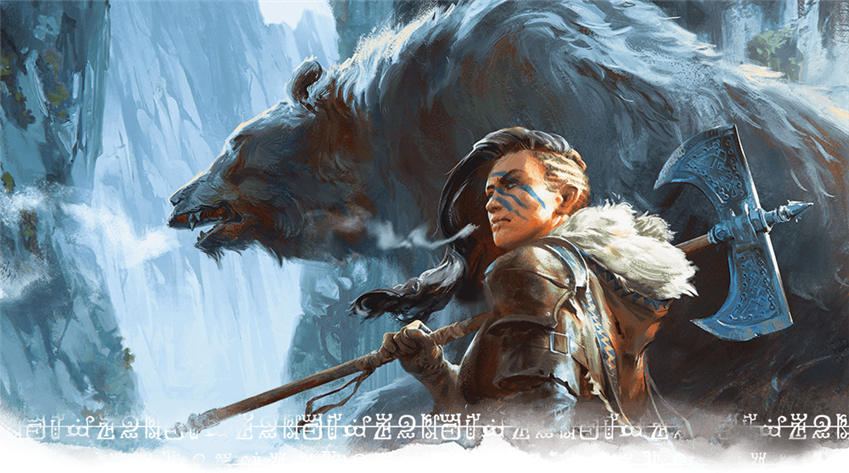
Fighting Style
Your first major build decision comes at 2nd level, when you have the option to choose your Fighting Style. Rangers have several options, but the best two options for you are either Archery or Two-Weapon Fighting. Archery gives you a serious accuracy bonus when fighting with ranged weapons (not just bows!) and Two-Weapon Fighting grants you a small damage bonus while dual wielding. Archery is probably the better style in a vacuum, but your character concept should supersede what is mechanically “optimal.”
Defense is a perfectly reasonable fighting style if you have mediocre defenses, but generally speaking, investing in offense is better for rangers. Only consider the Dueling fighting style if you’re playing an unusual Strength-focused ranger with a one-handed melee weapon and a shield.
Spells
Your second major decision comes at 2nd level, too! You first gain the ability to cast spells at this level, drawing from their own unique spell list. While your spell selection is more limited and you gain access to more powerful spells more slowly than “full caster” classes, you balance it out with your robust combat arsenal. Take this time before you gain your subclass at 3rd level to feel out what your role in the party is. That way, when you do gain your subclass, you’ll know what spells your party needs you to have access to on a regular basis.
When you reach 2nd level, you learn two 1st-level spells from the ranger spell list. Unlike some other spellcasting classes, once a ranger learns a spell, they know that spell forever. You can "trade out" one known spell for another spell on your spell list when you gain a level, but that's it. From here on out, you learn one new ranger spell at 3rd level, and at every odd-numbered level thereafter. You also gain access to a new spell level at 5th level, and every four levels thereafter. This is where retraining spells becomes important; if you know low-level spells that just aren’t useful to you anymore, you can swap them out for higher-level spells one-by-one to adapt to rising challenges.
As an offense-focused subclass, you’ll want to start by picking two spells labeled OFFENSE at 1st level. From there, you can be the judge of what spells you need to best support yourself and your party. Picking up a few spells labeled DEFENSE or SUPPORT over time couldn’t hurt, but you’ll want to make sure that your offense is always top-notch. As mentioned above, a large number of ranger spells require concentration, and you can’t have more than one concentration spell active at a time, so be careful.
Note that this list only includes some spells from the Player's Handbook, so if you want to choose more unusual spells, or have other sources like Xanathar's Guide to Everything, you'll have to do a little self-directed research. This list is just here to get you started if this is your first time playing a Beast Master ranger.
- Beast bond (OFFENSE/SOCIAL)
- Cure wounds (SUPPORT)
- Ensnaring strike (OFFENSE/DEFENSE)
- Hail of thorns (OFFENSE)
- Hunter’s mark (OFFENSE/EXPLORATION)
- Speak with animals (SOCIAL)
This list of spells is geared towards helping you select spells, while giving you freedom to pick your own spells and stand out from the pack. Nevertheless, there’s one spell that no Beast Master should be without: beast bond. Though this spell takes an action to cast, it’s such a serious buff to you and your beast companion that you should learn it the instant you rise to 3rd level. As long as you maintain your concentration, you can communicate telepathically with your animal companion while within line of sight, and the beast has advantage on attack rolls against any creature within 5 feet of you.
Of course, this spell is much less powerful if your animal companion has Pack Tactics, such as a wolf.
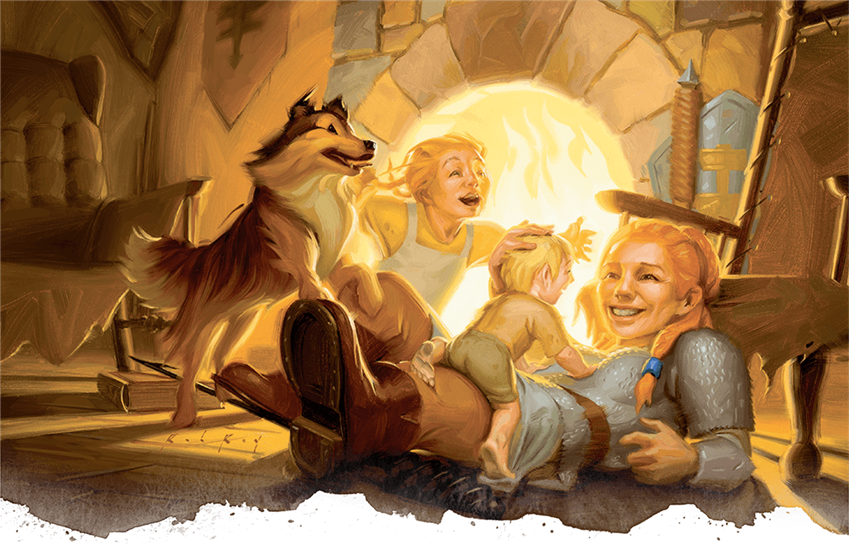
Animal Companion
Once you reach 3rd level and choose this subclass, you gain the Ranger’s Companion feature, allowing you to choose your animal companion. If you want your animal companion to aid you in combat, you should choose a beast with a challenge rating of 1/4 (the highest you’re allowed to choose). Here is a list of all Small or Medium CR 1/4 beasts in the Monster Manual. Of these beasts, you’ll want to pick ones with powerful attacks, or with other powerful offensive benefits. Some include:
- Giant frog. The frog’s Swallow attack lets it eat Small enemies, temporarily taking them out of the fight! This is great against packs of enemies like goblins or kobolds, but it loses steam as enemies become larger.
- Giant wolf spider. For a stealthier ranger, this creepy companion has a quick climbing speed, and a powerful poisonous bite. Gnomes and halflings can ride this guy up walls!
- Panther. This jungle cat’s Pounce trait can turn it into a damage machine, as long as it has room to move.
- Pteranodon. This prehistoric beast is notable for its Flyby trait, which allows it to avoid opportunity attacks, and its size—making it flying mount for Small rangers like halflings and gnomes!
- Wolf. A classic ranger companion, the wolf is one of the most powerful “iconic” beast to have by your side. Its Pack Tactics and Keen Senses make it useful in both combat and exploration.
Feats
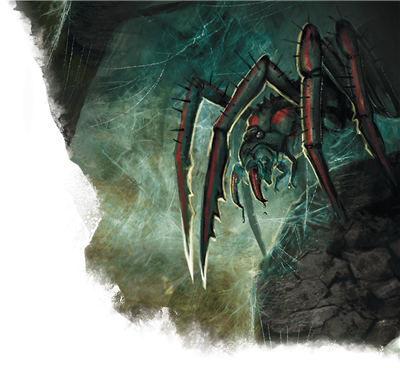 At 4th level, you get to gain either an Ability Score Increase or a feat. Choosing an Ability Score Increase lets you increase one ability score by +2 (such as increasing your Wisdom score from 14 to 16) or increase two ability scores by +1 (like increasing your Dexterity from 15 to 16 and your Wisdom score from 13 to 14). Increasing your ability scores makes you better at a wide variety of things; for instance, increasing your Wisdom score makes it harder for enemies to resist your spells, and also makes you better at making Wisdom checks and saving throws.
At 4th level, you get to gain either an Ability Score Increase or a feat. Choosing an Ability Score Increase lets you increase one ability score by +2 (such as increasing your Wisdom score from 14 to 16) or increase two ability scores by +1 (like increasing your Dexterity from 15 to 16 and your Wisdom score from 13 to 14). Increasing your ability scores makes you better at a wide variety of things; for instance, increasing your Wisdom score makes it harder for enemies to resist your spells, and also makes you better at making Wisdom checks and saving throws.
Feats, on the other hand, give you a special ability that could be more helpful in a specific circumstance, as opposed to the broad improvement that an Ability Score Increase could give you. Dexterity, Constitution, and Wisdom are likely your most important ability scores, since they govern your offensive, defensive, and spellcasting abilities. Since you have several ability scores to pour Ability Score Increases into, you may only want to only choose a feat if it seriously speaks to you. You can choose any feat you want to support your character concept, but there are some feats that may be more useful to your character than others. These feats include:
Crossbow Expert. Forget longbows, what you want is a crossbow—if you’re using this feat, at least. Ignoring loading restrictions and ignoring disadvantage on ranged attacks while in melee is incredibly powerful. Once you reach 5th level, have your beast attack, make one attack with a shortsword, and use your bonus action to shoot your hand crossbow. Pretty sweet.
Dual Wielder. This feat ups both your offense and your defense while wielding a weapon in both hands. A fine feat to take, especially if your Dexterity score is already maxed out at 20.
Mounted Combatant. If you’re a Small-size character riding a Medium-size beast, this feat has interesting potential, as it lets you protect your companion from harm while you’re riding it. You probably won’t gain advantage on attacks since your mount is only Medium-size, but it could still happen every now and then.
Sharpshooter. If you’re a ranger with a longbow and the Archery Fighting Style, this feat can turn you into a mobile laser cannon, tearing enemies to shreds with arrows that regularly deal 20 damage in a single hit. Ignoring cover is a potent benefit, in addition to the damage. If you command your animal companion to Help you from range as a bonus action, this feat can just become unfair.
If you want more advice for building a ranger, check out Ranger 101. Have you ever played a Beast Master? What advice would you give to players that want to play this subclass?
 James Haeck is the lead writer for D&D Beyond, the co-author of Waterdeep: Dragon Heist, Baldur's Gate: Descent into Avernus, and the Critical Role Tal'Dorei Campaign Setting, a member of the Guild Adepts, and a freelance writer for Wizards of the Coast, the D&D Adventurers League, and other RPG companies. He lives in Seattle, Washington with his fiancée Hannah and their animal companions Mei and Marzipan. You can find him wasting time on Twitter at @jamesjhaeck.
James Haeck is the lead writer for D&D Beyond, the co-author of Waterdeep: Dragon Heist, Baldur's Gate: Descent into Avernus, and the Critical Role Tal'Dorei Campaign Setting, a member of the Guild Adepts, and a freelance writer for Wizards of the Coast, the D&D Adventurers League, and other RPG companies. He lives in Seattle, Washington with his fiancée Hannah and their animal companions Mei and Marzipan. You can find him wasting time on Twitter at @jamesjhaeck.








-
View User Profile
-
Send Message
Posted Nov 22, 2019Maybe we'll get the beast master right in the next edition :/
-
View User Profile
-
Send Message
Posted Nov 22, 2019I don't see how Hunter's Mark is categorized as 'DEFENSE'.
It provides an offensive damage boost in combat, and advantage to find it in or out of combat. Nothing defensive about that, unless your idea of a good defense is a strong offense.
-
View User Profile
-
Send Message
Posted Nov 22, 2019You keep mentioning and linking giant constrictor snake as a good companion option, but it is a challenge rating 2 creature, and therefore way above the appropriate CR for animal companions (1/4 CR or lower). It's also a huge creature, when only medium or smaller are allowed. Perhaps you're thinking of a different creature, but accidentally linked the giant constrictor snake?
-
View User Profile
-
Send Message
Posted Nov 22, 2019I personally play a beast master ranger and use the Revised Ranger. Works a lot better than the normal version. I use a custom home brew magic eating toad called Ribbert.
-
View User Profile
-
Send Message
Posted Nov 22, 2019Using the Sidekick UA to level up your animal companion as you level can be a good way to "fix" the Beast Master archetype.
https://dnd.wizards.com/articles/unearthed-arcana/sidekicks
-
View User Profile
-
Send Message
Posted Nov 22, 2019You may want to re-examine your Crossbow Expert suggestion. It's a great feat, but you mention using it to make a short sword attack followed by a crossbow bonus action attack. The problem is that you still need a free hand to load the crossbow, as it still has the ammunition property. To do what you suggest with a short sword would require you to drop the sword, reload the crossbow, then pick up the sword again on every turn. While that's probably technically possible by using up your object interaction every turn, it's not exactly ideal. Instead, maybe just mention that Crossbow Expert allows you to make an attack with the crossbow, command your companion to attack, and then use a bonus action to attack with the crossbow again. There's no need to involve a short sword at all, just use the crossbow for both attacks. This allows you to play completely from ranged, helping to keep you away from the dangers faced in melee by making use of a short sword. It also combos extremely well with the Sharpshooter feat that you mention later, as both attacks can now benefit from that feat.
-
View User Profile
-
Send Message
Posted Nov 22, 2019That's right; the giant poisonous snake is the correct beast.
Likewise, I've re-categorized this spell as OFFENSE/EXPLORATION.
-
View User Profile
-
Send Message
Posted Nov 22, 2019I assume he meant the giant poisonous snake, a CR 1/4 medium beast
-
View User Profile
-
Send Message
Posted Nov 22, 2019In terms of power, giant poisonous snake has everything else beaten. With studded leather barding you get an AC of 16 on that snake at level 3, an attack of +8/1d4+6 and 3d6 (con save dc 11 for half) poison damage. Plus as a Goblin you can ride it.
As for 'getting beastmaster right' to an extent they did - it's called Battle smith under Artificer and shows how to allow someone to enjoy the pet as a perk, not a trade-off.
-
View User Profile
-
Send Message
Posted Nov 22, 2019Not sure how a beast companion is better than a Pact of the Chain's familiar?
The Chainlock's familiar can communicate telepathically without "Beast Bond," and with the Voice of Chain Master invocation, which does not require the use of a precious spell slot, the Chainlock can speak through their familiar and telepathically link to it virtually anywhere. Once your beast companion has left your line of sight, you cannot see through its eyes any longer.
That being said D&D is about having fun and if you have fun playing as a Beastmaster (which is an iconic subclass,) that is awesome.
-
View User Profile
-
Send Message
Posted Nov 22, 2019One of the most underrated (and unusual) beast companion options is the Stirge. The reason is it can continue to do damage to an enemy that it has latched onto in subsequent turns without making an attack, thereby freeing up your entire action.
-
View User Profile
-
Send Message
Posted Nov 22, 2019The main benefits that the Beast Master's companion enjoys over the Pact of the Chain warlock's familiar are combat buffs. The ranger's companion gains:
The companion is much more a combat pet, while the familiar is typically more of a scout, even when considering the inherent power that improved familiars like imps and pseudodragons possess.
-
View User Profile
-
Send Message
Posted Nov 22, 2019This is a very informative guide! This game me a lot of ideas!
I like the idea of a small race riding a pteranodon! Really hope that the UA gets adjusted so that I can do that with the "Beast of the Air" they have listed since it would be nice to use a beast companions attacks.
-
View User Profile
-
Send Message
Posted Nov 22, 2019Since when are pythons venomous?
-
View User Profile
-
Send Message
Posted Nov 22, 2019You could also mount the giant frog as a small race making it’s leap ability a fun movement option.
-
View User Profile
-
Send Message
Posted Nov 22, 2019WOTC need to admit that the PHB Ranger is a mistake and too weak to be viable. To be restricted to a small list of weird animal companions just to make the class barely okay is dumb.
The UA Revised Ranger should be made official. Bring out a PHB 2.0. with the UA version as standard
-
View User Profile
-
Send Message
Posted Nov 22, 2019Edit: this iscav really solid guide. I was really, really pleased that it specifically mentions pets nobody thinks of, but which are actually quite good!
Honestly, beast-master is the weakest by far of all of the subclasses is PHB and hasn't been corrected for with any of the revisions (except possibly the elemental-based UA ones)
Having to trade your attack for your companions essentially relegates your companion to the help action only until very late play.
I feel that calling them the most powerful is a misnomer as well, because chain locks right out the gate get access to pets with nearly- always-on invisibility and touch spell surrogacy.
Rangers in 5e miss the mark across the board, with the notable exception of Gloom-stalker, which is by far the best 5e ranger sub, and has many features baked into it that should be for all Rangers.
In general ranger subs are loaded with features that should just be base class skills/features, and Favored Enemy and Terrain are poorly implemented in 5e, more so than 3e
-
View User Profile
-
Send Message
Posted Nov 22, 2019Crossbow expert makes it so you ignore the loading mechanic, meaning that it still takes 2 hand to fire, but you can draw or stow a weapon as part of the same attack. It doesn't take 2 hands to carry, just to shoot
-
View User Profile
-
Send Message
Posted Nov 22, 2019Regardless of whether you thinks its the weakest, strongest, if you min/max or juke all the math. As a DM who on Saturday afternoons runs a 7 player adventure league campaign of players between 9 -15 years of age, about 60% of them play Beast master rangers, maybe its the pokemon culture of having beast fight for you as you stand back and watch. I don't know? I just know it's by far the most played class at my stores adventure league table, which is great because they all buy the wizkids wardling figures, trying to find their character and companion.